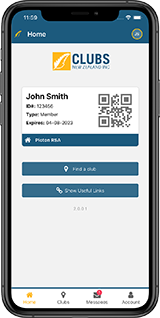Employment Status - not always a piece of cake
15 July 2021
How often can you have your cake and eat it? Once in a while an Employment Court decision comes along and suggests that that is perfectly possible, metaphorically speaking of course.
In the recent Employment Court case of Ross Barry v CI Builders Limited, Mr Barry, a builder, managed to persuade the court that he was an employee (enabling him to raise a personal grievance) even though he had happily accepted an independent contractor’s arrangement at the start of the relationship, three years before. So, why is this?
To be fair, this case has not changed the law, but it is an interesting example of the law in practice. The courts cannot be bound by the
label that the parties put on their relationship, nor by the intentions that the parties had when they started the relationship. The courts will instead concentrate on the real nature of the relationship, applying a number of tests to answer that question.
First, what’s the difference between an employee and an independent contractor? Another recent Employment Court case described the difference this way:
An employee works for the employer, within the employer’s business, to enable the employer’s interests to be met. An independent contractor is an entrepreneur, providing their own labour to others in pursuit of gains for their own entrepreneurial enterprise.
The tests that the courts apply when they are deciding the nature of the relationship look at a number of factors, including:
- the amount of control the employer exerts over the individual;
- how integrated the individual is in the employer’s business;
- the freedom to work elsewhere;
- the right to appoint a substitute;
- whether PAYE is withheld;
- whether the individual uses their own tools; and
- the amount of financial risk the individual takes.
In this case, the court found that CIB had the right to exercise detailed control over the way the work was done by Mr Barry. CIB retained the power to exercise control as and when it chose, to suit its business needs.
Mr Barry also worked consistently for CIB over an extended period of time, and was expected to turn up each day and work a full day.
Mr Barry was integrated into CIB’s business. There was nothing to differentiate him from other workers on site. He drove a company vehicle from time to time. He reported to the owner who assigned him tasks. He was not obliged to wear a company uniform, but no one else did either.
He was not prohibited from working for others but the matter never arose and the court found that it would have been unrealistic given the hours he worked for CIB.
He was not allowed to subcontract his work or delegate the performance of his duties to others.
Withholding tax (not PAYE) was deducted from his pay each week and he paid his own ACC contributions. However, he did not invoice CIB, but was paid weekly, regardless of whether the task had been completed or not, in accordance with his hours.
He got no paid holidays or sick leave. However, CIB made a wage subsidy application in relation to him during level 4 lockdown in April 2020.
Mr Barry was not required to provide his own tools and equipment.
Mr Barry did not bear any risk of loss, and had no chance of making a profit. Any goodwill generated by Mr Barry’s skill, labour and work ethic accrued to CIB, and not to him.
Most of these factors pointed to an employment relationship.
The court also heard evidence from Mr Davis, the General Secretary of the AWUNZ, a construction industry union. Mr Davis said there was a wide practice in the construction industry of characterising people as contractors, incorrectly, to avoid employment liabilities. However, such people are different from genuine contractors who compete for work, usually by tendering, such as tradesman builders,
scaffolders, welders, drain layers, electricians, and plumbers, who work across sites and on a particular site for a particular project.
The court found that Mr Barry was an employee, not surprisingly given the evidence. However, the case is a useful opportunity to show that industry practice is not determinative but a consideration along with other factors, and that it is the way a specific relationship operates in practice that determines the status and rights of the individual. Otherwise, the court said, it could be a case of “the tail wagging the dog”.
This is not new. In the leading case regarding employment status, Bryson v. Three Foot Six Ltd, regarding film crew working on the Lord of the Rings films, the Supreme Court said in 2005 that, while industry practice cannot be disregarded, it was not always useful in establishing the common intention of the parties.
So, if it is common in your industry to designate workers as independent contractors, but their arrangements look much more like those of an employee, be aware of the risks. No matter how cleverly the agreement may be worded, it’s the day to-day reality of the arrangement that counts.
(SOURCE: The Advocate, MGZ Employment Law, Issue 316, July 2021)

